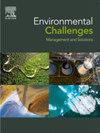神圣而阻碍:一种大型食草动物的栖息地使用模式揭示了印度农民面临的挑战
Q2 Environmental Science
引用次数: 0
摘要
大型食草动物是全球生态系统功能的组成部分,通常作为生态系统工程师或关键物种。然而,由于不断升级的人为压力和不同景观的快速土地利用转变,它们的空间生态日益受到破坏,导致空间不一致和全球人与野生动物冲突不断增加。印度的nilgai -nilgai冲突体现了这种挑战,特别是在nilgai栖息地和人类活动重叠的地区。我们使用了三个独立且广泛的数据集,包括相机捕获,公民科学和冲突记录中的nilgai事件,以评估印度景观尺度上nilgai栖息地偏好和冲突潜力。具体而言,我们评估了(a)决定景观中特定环境变量对nilgai适宜性的因素,(b)这些土地覆盖类别的适宜性程度,(c)这些类别的保护状况和行政区划分布,以及(d)农田和适宜栖息地斑块在该景观中的重叠程度。生境适宜性与人为干扰负相关,与森林落叶性和中度干旱正相关。在不同类型的土地覆盖中,草地(40.64%)、林地(32.36%)和耕地(25.96%)的适宜性最高。研究发现,超过83.83%的nilgai适宜生境位于保护区外,其中以中央邦(42.49%)居多。此外,我们发现中央邦极易受到冲突的影响,分别有43,720.39平方公里的适宜区域与农田重叠。考虑到农业用地更适合nilgai及其适应性,迁移可能不会缓解这种冲突,因为移除它们并不会改变这些地区的吸引力,可能会导致其他nilgai进入新的冲突。相反,建议更好的土地利用规划,优先保护保护区网络之外的牧场和森林,以促进人类与nilai在这一景观中的共存。本文章由计算机程序翻译,如有差异,请以英文原文为准。

Holy yet Hindered: Habitat use patterns of a large herbivore reveal challenges to Farmers in India
Large herbivores are integral to ecosystem functioning worldwide, often acting as ecosystem engineers or keystone species. However, their spatial ecology is increasingly disrupted by escalating anthropogenic pressures and rapid land-use transformations across diverse landscapes, leading to spatial incongruence and rising human-wildlife conflicts globally. The human-nilgai conflict in India exemplifies such challenges, particularly in regions where nilgai habitat and human activities overlap. We used three independent and extensive datasets comprising nilgai occurrences from camera trapping, citizen science, and conflict records to assess nilgai habitat preferences and the potential of conflict at a landscape scale in India. Specifically, we assessed (a) the factors that determine the suitability of a particular environmental covariate for nilgai in a landscape, (b) the extent of suitability of these land cover classes, (c) the distribution of these classes with respect to their protection status and administrative divisions, and (d) the extent of overlap between croplands and suitable habitat patches across this landscape. Our findings revealed that nilgai habitat suitability is negatively associated with anthropogenic disturbances, while positively with forest deciduousness and moderate aridity. Among different land cover classes, rangeland (40.64 %), closely followed by woodland (32.36 %), and cropland (25.96 %), stands out for its highest suitability. We found that over 83.83 % of nilgai suitable habitats lie outside protected areas, with the majority concentrated in Madhya Pradesh (42.49 %). Furthermore, we found that Madhya Pradesh is highly vulnerable to conflict, with 43,720.39 km² of suitable areas, respectively, overlapping with cropland. Given the higher suitability of agricultural lands and their adaptability for nilgai, translocation may not mitigate this conflict, as removing them does not change the attractiveness of these areas, potentially leading to new conflict as other nilgai move in. Instead, better land-use planning that prioritizes the protection of rangelands and forests outside the protected area network is recommended to promote human-nilgai coexistence in this landscape.
求助全文
通过发布文献求助,成功后即可免费获取论文全文。
去求助
来源期刊

Environmental Challenges
Environmental Science-Environmental Engineering
CiteScore
8.00
自引率
0.00%
发文量
249
审稿时长
8 weeks
 求助内容:
求助内容: 应助结果提醒方式:
应助结果提醒方式:


